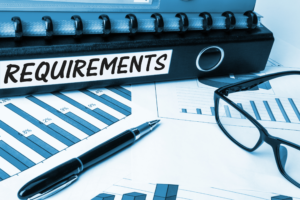Businesses today manage vast amounts of documents, including contracts, process guidelines, compliance reports, and customer records. However, these documents are often stored in multiple formats, lack standardization, and require frequent updates. Manual document processing leads to inefficiencies, increased costs, and compliance risks.
AI-powered document processing and standardization offer a smarter approach, using automation and natural language processing (NLP) to streamline workflows, improve document consistency, and reduce human errors. This article explores the challenges of traditional document management, how AI-driven automation enhances document processing, and the key benefits for businesses.
Challenges in Traditional Document Management
Many organizations still rely on manual or semi-automated processes for managing and updating documents. These outdated methods present several operational challenges:
Inconsistent Document Formatting
Documents are often created using different tools and templates, leading to variations in font styles, headings, and layouts. This inconsistency makes knowledge management more complex and reduces readability.
Time-Consuming Manual Updates
When policies, pricing, or regulations change, updating documents manually across multiple departments is slow and inefficient. This delay can result in outdated information being used in decision-making.
Human Error and Compliance Risks
Manually editing large sets of documents increases the risk of errors, missing updates, and non-compliance with industry regulations. Incorrect information can lead to financial and legal repercussions.
Poor Document Retrieval and Searchability
Documents stored in different locations and formats—such as PDFs, Word files, or spreadsheets—are difficult to locate. Standard search functions rely on exact keyword matches, making it hard to find relevant content quickly.
How AI-Powered Document Processing Works
AI-driven document processing solutions leverage machine learning (ML), NLP, and automation to manage and optimize document workflows. Key capabilities include:
Automated Formatting & Standardization
AI can enforce uniform styles, headings, and layouts across all documents, ensuring consistency and readability. It can also detect and correct structural inconsistencies.
Intelligent Content Categorization & Metadata Tagging
By analyzing document content, AI can categorize files, apply relevant tags, and organize information for faster retrieval. This enhances searchability and improves document management.
Dynamic Updates & Version Control
AI-powered systems can detect outdated information, such as pricing changes, compliance updates, or new company policies, and automatically apply the necessary modifications across all affected documents.
Enhanced Search & Information Retrieval
Unlike traditional keyword-based searches, AI-driven search functions use semantic understanding to locate relevant content. Employees can find information using natural language queries, reducing the time spent searching for documents.
Document Summarization & Extraction
AI can generate concise summaries of lengthy documents, allowing users to extract key insights without reviewing the entire content. This is particularly useful for legal, financial, and regulatory documents.
Key Use Cases for AI-Driven Document Processing
AI-powered document standardization is particularly valuable in industries where accuracy, compliance, and efficiency are critical. Key applications include:
Updating Pricing Information
AI can scan multiple documents, identify outdated pricing, and update the figures automatically across all related files, ensuring consistency across departments.
Implementing Process & Policy Changes
When a company updates its standard operating procedures (SOPs), AI can make adjustments across all relevant documents, ensuring all teams have access to the latest version.
Legal & Compliance Documentation
AI-driven automation ensures that legal contracts, compliance reports, and regulatory filings adhere to standardized formats and contain the most up-to-date information.
Technical & Product Documentation
For companies that manage extensive technical manuals, AI can update product specifications, troubleshoot guides, and customer support documents without manual intervention.
Benefits of AI-Powered Document Processing
Adopting AI-driven document standardization brings significant advantages to businesses:
Increased Efficiency & Productivity
Automating document processing reduces the time spent on manual updates, allowing employees to focus on higher-value tasks.
Enhanced Accuracy & Compliance
AI minimizes human errors, ensuring that documents remain accurate, compliant, and aligned with industry regulations.
Faster Document Retrieval & Knowledge Access
AI-powered search functions improve document retrieval speed, enabling employees to find critical information in seconds.
Cost Savings & Resource Optimization
By automating repetitive document tasks, businesses reduce operational costs and minimize the need for manual labor.
Improved Knowledge Management & Collaboration
A standardized document framework ensures consistency across departments, enhancing internal collaboration and knowledge sharing.
Conclusion
AI-powered document processing and standardization are essential for businesses looking to improve efficiency, accuracy, and compliance. By automating formatting, categorization, updates, and retrieval, organizations can eliminate manual inefficiencies, reduce errors, and enhance overall knowledge management.
As businesses continue to digitize and scale, AI-driven document standardization will play a crucial role in ensuring consistency, accessibility, and seamless knowledge transfer across teams. Investing in AI-powered knowledge management solutions today will provide organizations with a competitive edge in the future.





